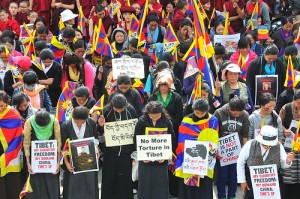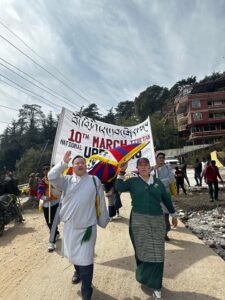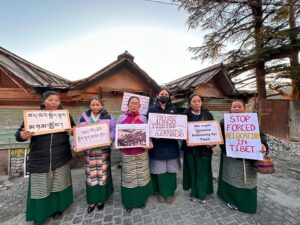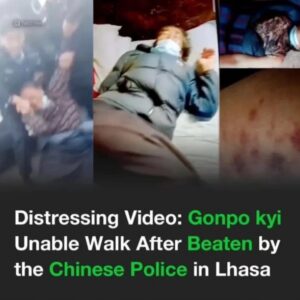The crucial role of women in non-violent protest and the Tibet movement

Since Women’s Uprising Day in 1959, Tibetan women have played a crucial role in the movement for freedom in Tibet. Between 1959 and 1984, following the original founding of TWA on Women’s Uprising Day, many Tibetan women’s groups were established by those living in exile in India. Many of these groups organised handicraft centres which not only helped to provide an income for Tibetan women in exile but also helped to maintain Tibetan culture and beliefs. In September 1984, TWA was officially reinstated with the blessings of His Holiness the Dalai Lama, and it now has over 15,000 members and 52 branches worldwide making it one of the key organisations involved in the movement to campaign for greater human rights in Tibet and help to broadcast to the world the impact of China’s policies.
Along with working to maintain Tibetan culture and promote unity between Tibetans through groups and publications, Tibetan women have played a valuable part in non-violent protesting and many of them have been brutally punished for doing so. Following the protests which occurred during and after Uprising Day in 1959 many women – including Pamo Kusang, leader of the demonstrations – were arrested, tortured and/ or killed as a direct result of their participation in the non-violent protests. Kusang was partly responsible for promoting the decision that Tibetan women would participate only in non-violent protests. Tibetan women both in Tibet and in exile have continued to participate in non-violent protests and by 1996 one third of all non-violent protesters in Tibet were women.
Tibetan nuns have played a crucial role in organising and attending non-violent protests. Yangdon Dhondup, a Tibetan religious studies expert at the University of London, states that ‘Nuns play an incredibly significant role in political activism, because they symbolize in many ways the marginalized, the oppressed, and the minority… By staging these nonviolent protests, nuns are seen by the society as heroic figures and were thus able to raise the status and reputation of women and nuns within Tibetan society’.
While Tibetan women continue to support the Tibet movement in the ways outlined above, some women have begun to engage in a new form of protest – self-immolation. Of the 26 Tibetans who have self-immolatied since February 2009, five have been women. The first three women to self-immolate were Tenzin Wangmo, 20, Palden Choetso, 35, and Tenzin Choedron, 18, all of whom were nuns. A mother of four known as Rinchen, 33, became the first laywoman to self-immolate, followed a day later by a Middle School student known as Tsering Kyi,19. Self-immolation has become a new form of protest for Tibetans after the self-immolation of a monk named Tapey, 20, outside his monastery gained widespread media attention. Such drastic measures of protest illustrate the desperation felt by all Tibetans as a result of the oppression and the vast human rights abuses suffered by Tibetans at the hands of the Chinese authorities.
On March 12th this year, to mark the 53rd anniversary of Women’s Uprising day in Tibet, TWA organised a commemoration ceremony in remembrance of those Tibetan women who have died in the fight for freedom in Tibet, followed by a peace rally in which hundreds of women marched in protest.
The role of Tibetan women in non-violent protests for Tibet and the return of His Holiness the Dalai Lama to Tibet, along with their role in promoting Tibetan culture and language so that it is not lost during the struggle means the work of Tibetan women has been, and continues to be vital to the Tibet movement. TWA is committed to supporting the movement for vastly improved human rights and freedoms in Tibet and condemns any action which restricts these rights of Tibetans, including their right to protest.




